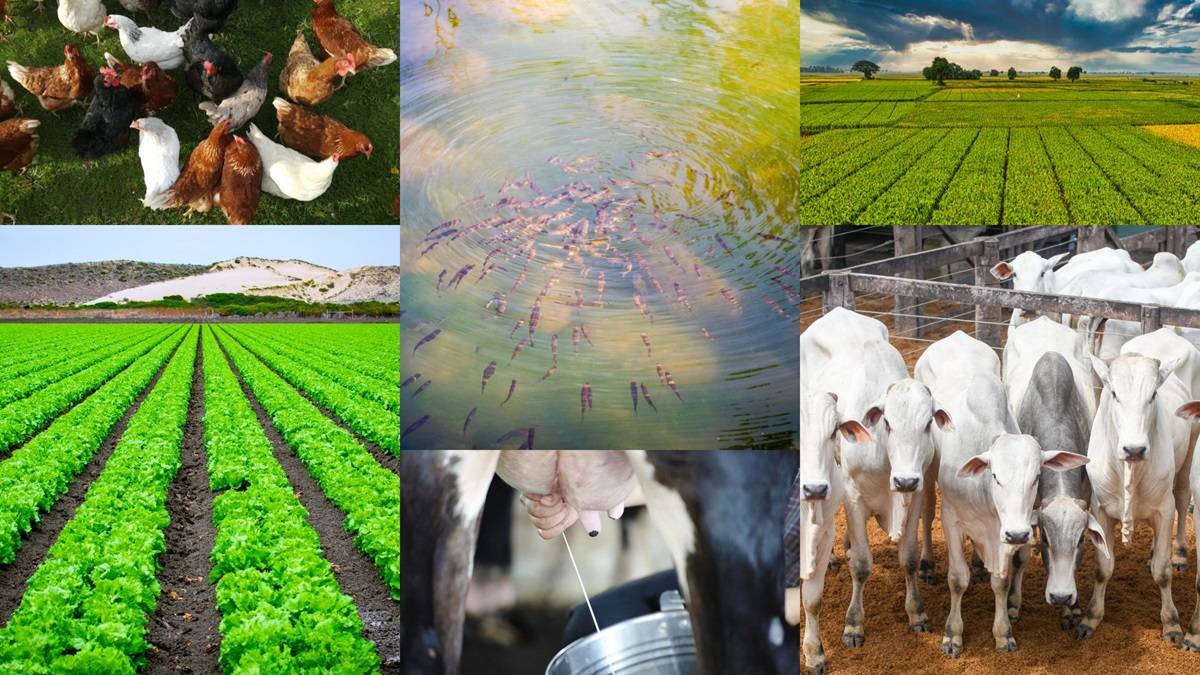
In Karnataka, a big change is happening! The government has launched a new scheme called 'Karnataka Raitha Samruddhi Yojana' and has set up the Agriculture Development Authority to promote integrated farming. This approach combines different types of farming like crops, animals, and trees to help farmers make more money. Let's take a closer look at why integrated farming is important and how it could make a difference for farmers and the agriculture sector. Read here:
Karnataka Raitha Samruddhi Yojana
To revolutionize agriculture and boost farmers' income, Karnataka has introduced the Karnataka Raitha Samruddhi Yojana in its 2024-25 budget. This scheme strives to promote integrated agriculture by bringing together different agricultural initiatives. The state government is committed to providing farmers with the necessary support and guidance to create a favorable environment for agricultural success.
Key Objectives and Provisions
The Karnataka Raitha Samruddhi Yojana 2024 for the agricultural sector is multifaceted, aiming to empower farmers in several key areas:
-
Stable Income Generation: Encouraging farmers to adopt comprehensive agriculture practices encompassing crop cultivation, animal husbandry, horticulture, and dairy farming to secure a stable income.
-
Scientific Crop Selection: Assisting farmers in selecting appropriate crops based on soil characteristics and market demands, optimizing productivity and profitability.
-
Soil Health Management: Providing farmers with information on soil testing and characteristics, facilitating informed decision-making and sustainable soil management practices.
-
Technology Adoption: Supporting farmers by disseminating knowledge about new agricultural practices and technologies, empowering them to enhance efficiency and productivity.
-
Storage and Value Addition: Educating farmers about opportunities related to storage and value addition, enabling them to leverage market opportunities and maximize returns.
-
Market Linkages: Creating market linkages for farmers to access better prices for their produce, ensuring fair returns for their efforts.
Principles of Integrated Farming
Integrated farming operates on several key principles:
-
Diversification: Integrated farms integrate multiple agricultural activities to diversify income sources and reduce risks associated with single-crop or single-livestock farming.
-
Resource optimization: By utilizing resources such as land, water, and nutrients more efficiently, integrated farming maximizes productivity while minimizing waste.
-
Symbiotic relationships: Integrated farming fosters symbiotic relationships between different components of the farm, where one component's waste becomes another's input, creating a closed-loop system.
-
Environmental sustainability: Integrated farming practices prioritize environmental sustainability by minimizing chemical inputs, conserving soil and water resources, and promoting biodiversity.
Noteworthy Components
Integrated farming systems typically incorporate several components, including:
-
Crop cultivation: Farmers grow a variety of crops using sustainable practices such as crop rotation, intercropping, and organic farming techniques.
-
Livestock rearing: Animals such as poultry, cattle, pigs, and fish are raised on the farm, providing additional sources of income and nutrient-rich manure for crop production.
-
Aquaculture: Integrated farms may include fish ponds or aquaponic systems, where fish are raised alongside crops. Fish waste provides nutrients for plant growth, while plants help filter the water for the fish.
-
Agroforestry: Trees and shrubs are integrated into the farm landscape, providing shade, windbreaks, and additional income through timber, fruit, and nut production.
Multiple Benefits
Integrated farming offers numerous benefits to farmers, the environment, and society as a whole:
-
Increased productivity: By diversifying agricultural activities, integrated farms can achieve higher overall productivity compared to monoculture farming systems.
-
Resource efficiency: Integrated farming optimizes the use of resources such as land, water, and nutrients, reducing waste and increasing efficiency.
-
Resilience to climate change: Diversification and sustainable practices make integrated farms more resilient to climate change impacts such as droughts, floods, and pest outbreaks.
-
Environmental conservation: Integrated farming promotes soil health, water conservation, and biodiversity conservation, contributing to long-term environmental sustainability.
-
Improved livelihoods: Integrated farming provides farmers with multiple income streams and reduces their dependency on external inputs, improving their economic resilience and livelihoods.
Challenges and Considerations
While integrated farming offers many benefits, there are also challenges and considerations to be addressed:
-
Knowledge and skills: Implementing integrated farming requires knowledge and skills in multiple agricultural disciplines, which may pose challenges for some farmers.
-
Market access: Farmers practicing integrated farming may face challenges in accessing markets for their diverse range of products, especially if they are targeting niche markets.
-
Resource constraints: Integrated farming may require initial investments in infrastructure, equipment, and training, which may be challenging for small-scale farmers with limited resources.
-
Risk management: Diversification can help spread risks, but farmers must carefully manage and balance the different components of their integrated farming systems to minimize potential risks.
The agricultural community in Karnataka is hoping for a better future as it sets off on its path towards this new method. Despite challenges, the potential benefits of integrated farming make it a valuable strategy for addressing the complex challenges of agriculture in the 21st century.















